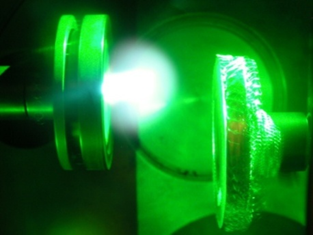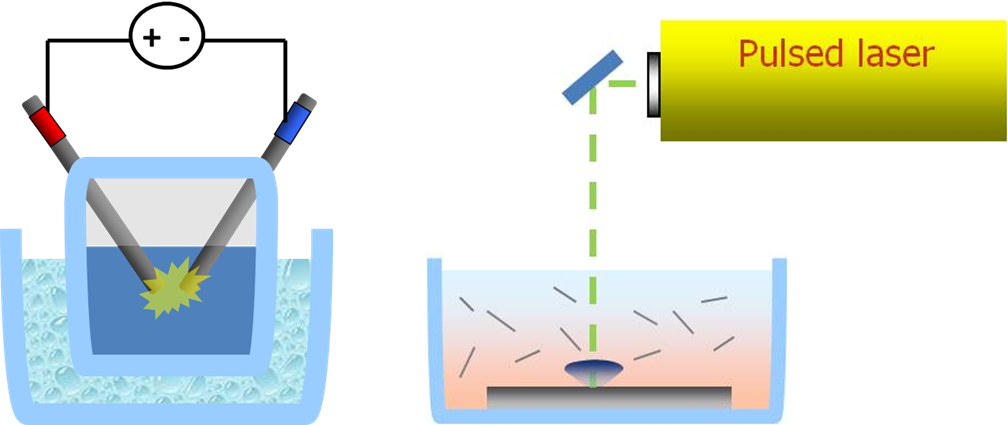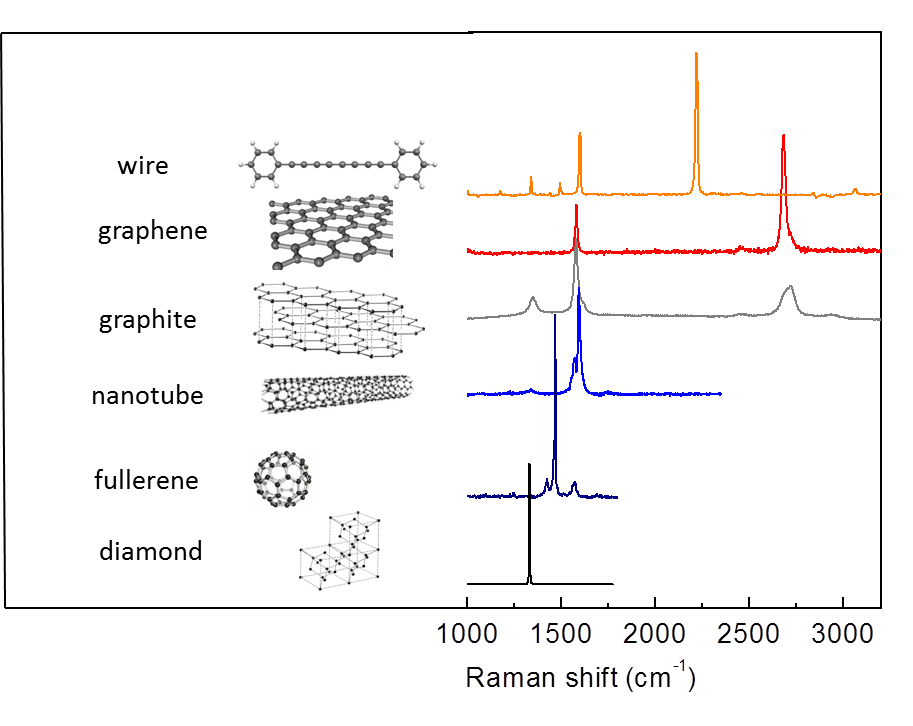Fabrication of Carbon wires
Carbon wires are fabricated by physical techniques such as the submerged arc dischrge in liquids (SADL) and the pulsed laser ablation in liquids (PLAL). PLAL is used for the versatility in the choice of the target materials and SADL for the scalability and low cost.
Film deposition

A methodology for direct film deposition on a substrate is based on a physical vapor deposition PVD technique such as pulsed laser depostion PLD. Our approach allows to deposit sp-carbon films by PLD employing ns laser pulses to ablate a graphite target in the presence of a background gas. sp-carbon forms in the strongly out-of-equilibrium conditions occurring when the plasma plume is confined by the background gas pressure.
Characterization of Carbon wires
Wires are characterized by vibrational spectroscopy (e.g. Raman). Vibrations in molecules and solids are strongly dependent on the atomic arrangement and chemical bond. In carbon nanostructures the local atomic organization can be very different due to the hybridization state and local order, hence a vibrational technique sensitive to the local vibrations can provide a wealth of structural and chemical information. Raman spectroscopy is a technique based on inelastic scattering of light by the thermally excited vibrations (i.e. phonons in quantum solid state approach) of the material. The technique is based on the analysis of the spectrum of an incident monochromatic light (laser light with a given wavelength) after the interaction with a sample. The outcoming light can have wavelengths higher and lower than the incident one. In a quantum particle description incident photons are inelastically scattered by phonons and come out from the material with a different energy. The difference equals the energy exchanged in the process in creating or annihilating a phonon. In this way the spectrum contains information on the phonon energy that can be a fingerprint of some characteristics of the investigated material. Raman turns out to be extremely useful to investigate carbon-based materials and nanostructures. Sp carbon shows Raman peaks in a specific spectral region (1800-2200 cm-1) where no other peaks from sp2 carbon (1300-1600 cm-1 and 2700-3200 cm-1) or from diamond (1332 cm-1) are present, thus permitting to identify its presence, even when other carbon phases coexist, as in the case of sp-sp2 carbon moieties.

